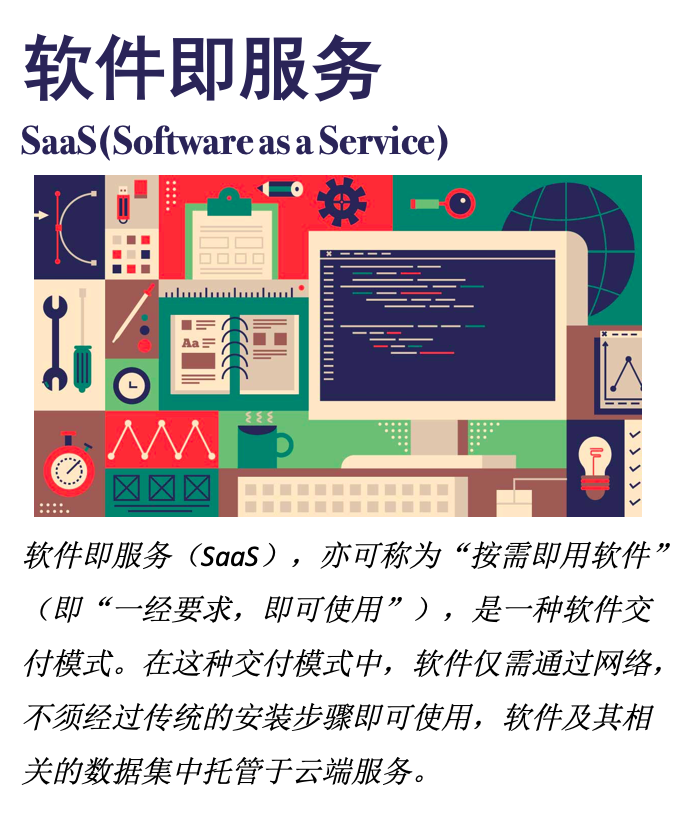
「释义」
软件即服务(SaaS),亦可称为“按需即用软件”(即“一经要求,即可使用”),是一种软件交付模式。在这种交付模式中,软件仅需通过网络,不须经过传统的安装步骤即可使用,软件及其相关的数据集中托管于云端服务。
对于许多小型企业来说,SaaS是采用先进技术的最好途径,它消除了企业购买、构建和维护基础设施和应用程序的需要。企业采用SaaS服务模式在效果上与企业自建信息系统基本没有区别,但节省了大量用于购买IT产品、技术和维护运行的资金,且像打开自来水龙头就能用水一样,方便地利用信息化系统,从而大幅度降低了中小企业信息化的门槛与风险。
「应用场景」
新上任的CEO纳德拉希望推动微软核心业务及定价、销售方式转型。不同于以往出售使用许可、依靠微软传统的“Windows优先”战略,纳德拉提出一套“云服务优先”的模式,可以把公司的许多产品转为软件即服务模式——也就是现在常见的缩略词SaaS。SaaS模式的费用取决于实际使用量,与公共事业公司向住户收取水电费的方式类似。客户用得越多,要缴纳的费用就越高。纳德拉意识到,这种转型不仅需要公司战略做出改变,还需要一种全新的销售思路。
As the new CEO, Nadella wanted to transform Microsoft’s core business and the way it priced and sold its wares. Instead of selling licenses and relying on Microsoft’s traditional “Windows first” strategy, he envisioned a “cloud first” model that would convert many of the company’s products into software as a service—known by the now-ubiquitous acronym SaaS. The SaaS model bases fees on consumption, similar to how utility companies charge households for water or electricity. The more the customer uses, the higher the bill. Nadella recognized that this transformation would require not just a change in strategy but an entirely new mindset about the sales function.
以上文字选自《哈佛商业评论》中文版2021年3月刊《从出售产品转为出售服务》
道格·钟(Doug J. Chung) | 文
马冰仑 丨编辑




